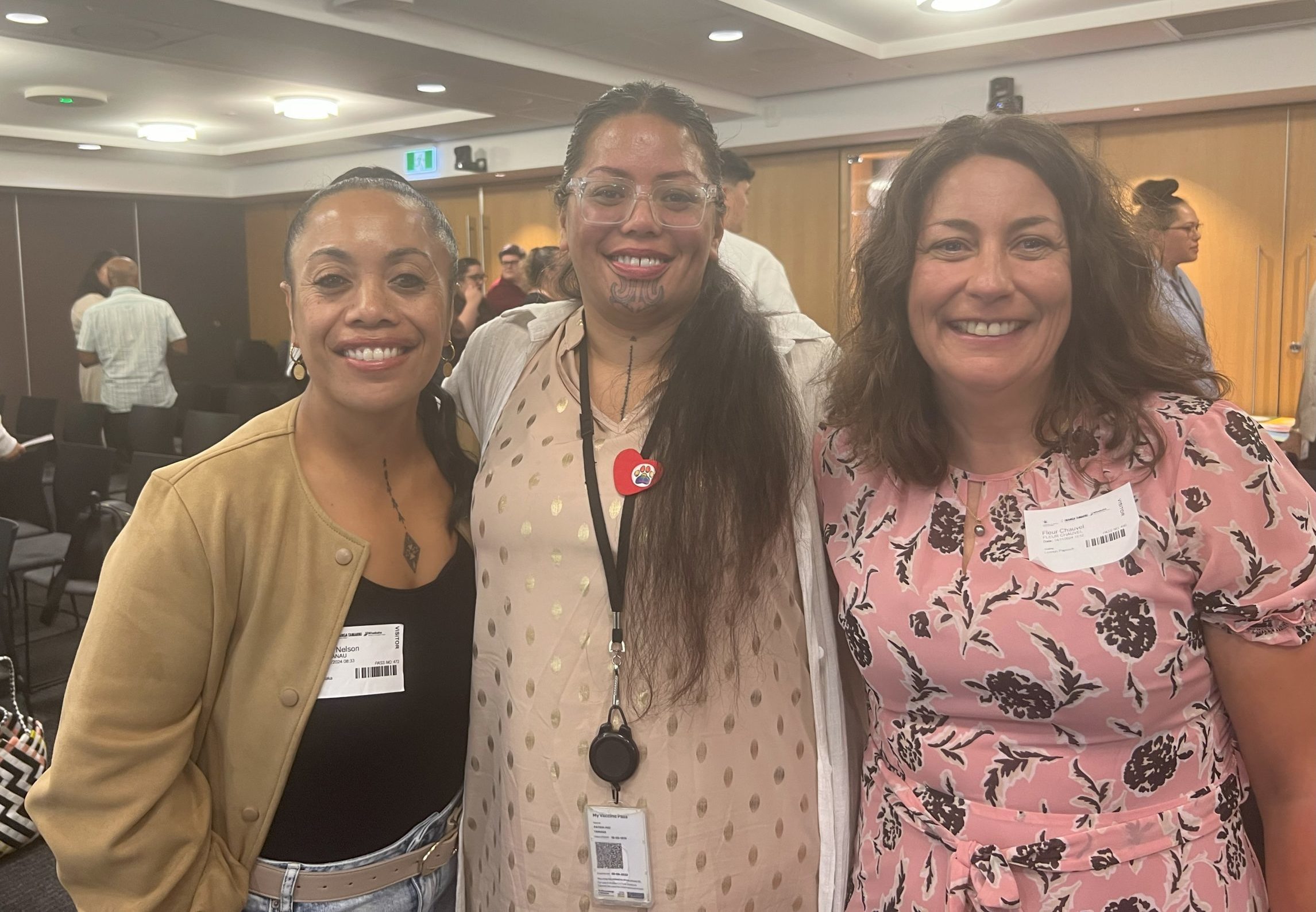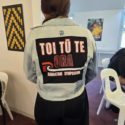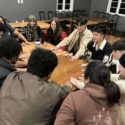In mid-November 2024, E Tū Whānau kaimahi, community partners, researchers and experts celebrated the publication of three innovative kaupapa Māori measurement ‘tools’.
Developed alongside E Tū Whānau communities, these wānanga and kōrero-based resources are designed to empower whānau on journeys of positive change.
Kete containing the three new E Tū Whanau measurement tools
The three new measurement tools were on display at the celebration event
E Tū Whānau kaimahi, hapori, researchers and subject-matter experts worked together over several years to develop, pilot and refine these scientifically robust measurement tools.
Together, they offer rich data and insights about whānau and community resilience, transformation and readiness to mobilise for sustained positive change.
The three new E Tū Whānau measurement tools
Te Pikitia a te Whānau – The Whānau Wellbeing Tool
Te Pikitia a te Whānau is a wānanga-based, strengths-focused tool that quantitatively measures and enhances collective whānau-level wellbeing. In this ground-breaking Indigenous psychometric tool, whānau work through three wānanga kete, or resource kits, to agree the tikanga of their wānanga, respond to carefully designed questions related to whānau wellbeing, and decide how they will navigate their journey of transformation.
Te Pikitia a te Whānau assesses and enhances whānau wellbeing
Te Pikitia can be led by either whānau themselves or a facilitator.
The tool, which is culturally, practically and scientifically robust, was developed, refined and piloted alongside a range of whānau across the motu.
“I didn’t feel like we were being assessed … We got to celebrate where we feel like we were going … You get to see snippets of opportunities for growth.”
Whānau member involved in Te Pikitia development
Alongside E Tū Whānau community partners and whānau Māori, Te Pikitia was developed by Finley Ngarangi Johnson (Rongomaiwahine, Ngāti Kahungunu) and Dr Zach Penman of E Tū Whānau, with the support of Keelan Ransfield (Ngāti Tukorehe, Ngāti Raukawa, Ngāti Porou) and Moerangi Falaoa-Rakaupai (Niue, Ngāti Tūwharetoa, Ngāti Maniapoto, Ngāti Raukawa) and a panel of pūkenga Māori research and subject-matter experts.
Te Whakaoreore Aromatawai Hāpai ki te Hapori – The Community Mobilisation Assessment Tool
A kōrero-based community self-assessment tool, Te Whakaoreore Aromatawai Hāpai ki te Hapori, measures current levels of community mobilisation, particularly in relation to preventing violence and strengthening wellbeing within whānau.
The measurement tool assesses what is happening to support community mobilisation while building and encouraging deeper understanding of whānau wellbeing and supporting community planning to focus efforts for greater impact.
Te Whakaoreore Aromatawai Hāpai ki te Hapori contains posters, a facilitator’s guide, a note-taker’s pack and kōrero starter cards as well as booklets for wānanga participants to record their reflections.
Development, testing and refinement of Te Whakaoreore was guided by He Awa Whiria, the blending of Western and kaupapa Māori approaches to community engagement, research methods and knowledge-building. NZ Community Mobilisation expert, Dr Cristy Trewartha, led the development of Te Whakaoreore, alongside E Tū Whānau kaimahi Keelan Ransfield and Mat Mullany (Ngāti Pārau, Ngāi Te Ruruku, Ngāti Matepū, Ngāti Hāwea, Ngāi Te Whatuiāpiti, Kuki Airani), Māori academics and He Awa Whiria experts Dr Angus McFarlane and Dr Sonya McFarlane, and community partners.
“E Tū Whānau is excited and grateful for the mahi and insights of all the whānau, hapori, researchers and subject-matter experts who have worked so hard to bring this valuable whanau-centred tool into our kaupapa and communities,” says Keelan Ransfield.
E Tū Whānau Tikanga Rangahau – Community Kete
Tikanga Rangahau – E Tū Whānau Community Kete is a kanohi ki te kanohi guided conversation tool that measures the effectiveness of communities working with E Tū Whānau to strengthen and uplift whānau. It provides robust data about the transformation that is possible through E Tū Whānau over time.
Innovative in design, Tikanga Rangahau is the first kaupapa Māori research instrument that produces quantitative data from qualitative, conversational inputs.
Co-designed alongside three E Tū Whānau communities, the tool was developed and refined by MSD’s Research and Evaluation team, including Kahukore Baker, Dr Lara Greaves (Ngāpuhi), Fleur Chauvel (Tahitian) and other external mātanga, and E Tū Whānau kaimahi Tria Tamaka (Ngāti Ruanui, Ngāti Maru, Waikato, Ngāti Kahungunu).
Tikanga Rangahau supports communities to measure and understand the transformation that is possible through E Tū Whānau
“Measure, measure, measure”
Ann Dysart (Te Rarawa), founding Pou of E Tū Whānau, laid the foundations for the development of Te Pikitia, Te Whakaoreore and Tikanga Rangahau.
She was acutely aware that understanding how and why change occurs is vital to building an evidence base around what makes a difference for whānau Māori in Aotearoa.
Her mantra was “Measure, measure, measure”.
Recognising their value, E Tū Whānau team leader Keelan Ransfield agrees that these new tools are exciting and promising, not least as they will generate insights into differences E Tū Whānau is making and the reason why our community partners do what they do.
“Their true value lies in their potential to measure and understand the impact of kaupapa Māori in supporting real change in whānau and communities, in growing te mana kaha o te whānau and in helping to strengthen and empower whānau, including through increased social and economic wellbeing.”
Keelan Ransfield
What’s next?
Over the coming months, capability development will be available to support E Tū Whānau community partners to use the three tools.
Want more?
Research affirms whānau-centred approach of E Tū Whānau





